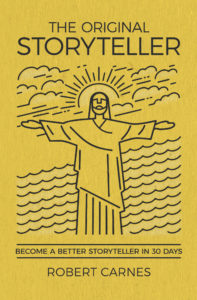
In 2010, Brandon Stanton lost his finance job in Chicago. He took the opportunity to move to New York City and start a career in photography. He was broke. He’d never been to New York before. And he only had six months of photography experience.
Stanton started a Facebook page to share his photos. His goal was to collect 10,000 portraits of New Yorkers and plot them on a virtual map of the city. He worked daily, snapping pictures and posting them online. It was mediocre.
Things changed when Stanton started asking his subjects a few questions. He included their first-person testimonials as photo captions. These stories added to the pictures’ impact.
Six years later, Humans of New York now has over 18 million Facebook followers.
Not only is Brandon Stanton’s story compelling, it’s also a fantastic example of the power of storytelling. People react to stories over nearly any other content.
The Experience Age
The Information Age is officially over – we are now in the Experience Age. We’re constantly bombarded by information, so experiences are a valuable commodity.
- 79% of people scan web pages rather than reading word by word
- 55% of users spend less than 15 seconds on a web page
- The average person is served about 5,000 marketing messages per day
- 168 million emails are sent every 60 seconds
- 100% of people reading this article probably don’t care about these statistics
Rather than reading online, most people skim, glance at headlines, or look at pictures.
Attention is the currency of the Experience Age. People are willing to give their attention to anything compelling enough to stand out from the noise. Storytelling is one of the best ways to differentiate your content and hold an audience’s focus.
Storytelling in the Church
“All these things Jesus said to the crowds in parables; indeed, he said nothing to them without a parable.” —Matthew 13:34
Odds are you’re already telling stories at your church. Most pastors’ sermons include an anecdote or two; we tell our kids Bible stories every week in Sunday school; and every testimonial video shown before a baptism is a story of life change.
The nature of storytelling is rooted in the Bible itself. Some researchers estimate that up to 35% of the dialogue from Jesus in the Gospels is spent in direct storytelling. Each of those parables He told was a story used to illustrate a point in terms his audience could understand.
Every person has a story to tell. As long as your church has people, it has an endless supply of stories. Now all you have to do is to start sharing those stories on social media.
Collecting Stories
How do you find these stories to tell? Collection is often the first challenge churches face. Simply put, you can’t find these stories if you don’t ask.
Some churches create an online form asking for stories of life change. Others train their staff and volunteers to recognize these narratives as they encounter them. You can even post requests for congregational stories on social media itself.
As you collect these stories, build a story database. This will allow you to sustain your narrative efforts over the long run. Good stories can be retold and recycled into different formats.
Take one rich story and present it in a variety of different content forms. Write a blog post. Share a photo on social. Design a graphic from an impactful quote. Upload a video testimonial to YouTube. The options are endless. The format of story transcends platforms and devices.
Be Authentic
Trust was a casualty of the Information Age. Our ability to believe brands was drowned in a flood of advertising. Set yourself apart by telling authentic stories with no ulterior motives.
This may force you to deal with some uncomfortable issues and challenging situations. That’s to be expected; don’t shy away from the challenge. Good stories evoke empathy. They recount shared experiences. They show people they aren’t alone.
When told in the right way, authentic stories will help to humanize your brand. People don’t trust brands; they trust other people. Show them that your church brand is more than a logo; your church is a community of caring people that they can relate to.
Tell a Complete Narrative
Not every post on social media is a story. Genuine stories compose a narrative with a beginning, middle, and end. They have a setting and a main character. The most compelling stories also introduce a conflict, which is eventually resolved by the end of the story.
All of this can be difficult to pull off in the span of one social media post. Difficult, but not impossible. Humans of New York proves that users are willing to read a longer post if it’s an interesting story.
Take the time to compose a story that your audience will be willing to read. Remember that a photo is worth 1,000 words, which really helps with those character limits. Images and video can enhance social media storytelling beyond traditional means.


